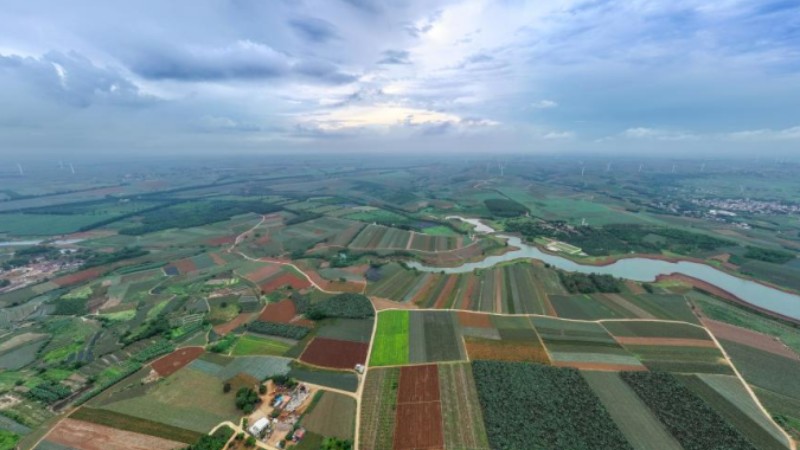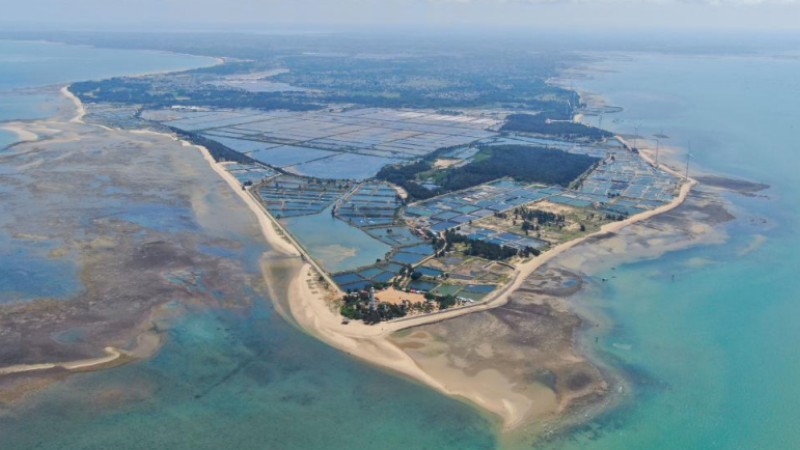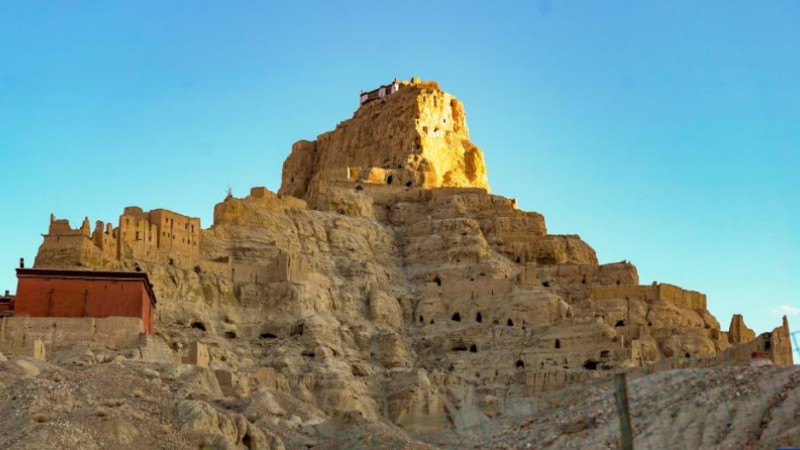Ten Years of the Belt and Road: The Gambia story
Ten years ago, Chinese President Xi Jinping launched the Belt and Road Initiative, an ambitious global initiative that aims to connect the world via land and maritime networks to boost trade and regional integration.
Inspired by the ancient Silk Road, the BRI comprises a Silk Road Economic Belt and a 21st Century Maritime Silk Road.
In September 2018, The Gambia joined the pack a little over two years after both countries resumed diplomatic ties following a 20-year break.
The Gambia had just come out of a brutal dictatorship and needed all the support to forge ahead. China, through the BRI, provided exactly that.
Three years later, a region in The Gambia that never had a bridge witnessed the ribbon-cutting of four bridges and three roads, boosting trade and connecting the area with the rest of the country.

President Adama Barrow and First Lady pose with the Chinese project team at the inauguration of the URR bridges and roads. (Photo/State House media team of The Gambia)
“We have the Upper River Region, URR, road and bridge projects funded by the government of China. The project has been completed and benefited the people of URR in terms of boosting trade in the region and linking the region with Southern Senegal and beyond. People in the region can now travel from one point to the other without difficulty in terms of transportation as the roads are in good condition,” Lamin Njie, a communications officer at The Gambia’s Ministry of Works, Transport and Infrastructure, said.
The Gambia is among 151 countries that signed up to the BRI and the benefits have come earlier than expected.
The Basse, Fatoto, Suduwol and Chamoi bridges have been constructed together with Basse-Fatoto-Koina roads, attracting trade and investment into a previously neglected rural settlement.
The Chinese ambassador to The Gambia at the time, Ma Jianchun, who witnessed the whole project from its signing to completion, was impressed with the pace and quality of the work.
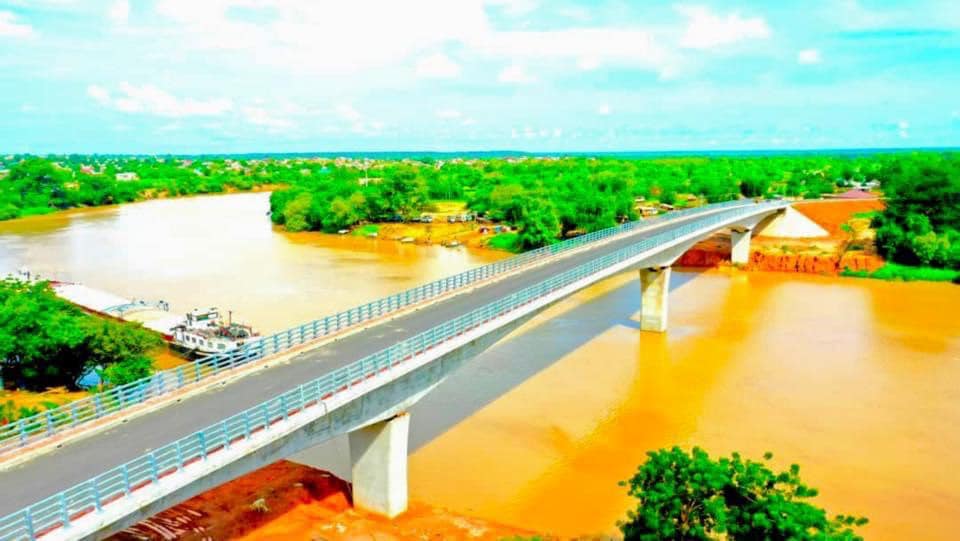
The Basse Bridge (Photo/State House media team of The Gambia)
“The newly-built roads and bridges project includes 51 kilometers of asphalt road, extending from Basse to Koina through Fatoto. The project also includes two major bridges, namely the Basse Bridge and the Fatoto Bridge, with a length of 250 meters and 170 meters respectively,” he said. “I am deeply impressed and excited by the China speed and efficiency, and the cordial spirit of China-Gambia collaboration. The successful completion and inauguration of this project fully demonstrates the high standards of China’s design, construction and management, and the immense potential of the China-Gambia cooperation."
“With the hard efforts and close cooperation of both Chinese and Gambian engineers and workers, we eventually accomplished connection of the ‘last mile’ in national highway network of The Gambia, and ended the history that there is not even one bridge crossing over the Gambia River in URR," he added.
At the same event, President Adama Barrow said, “To the credit of the project team, the implementation phase is one of the fastest in the history of project implementation in The Gambia. Despite the COVID-19 pandemic, the project was completed ahead of the scheduled timeline of 30 months.
As a result, I am bound to use this opportunity to thank the People’s Republic of China, and to reassure them that my government is committed to strengthening our bilateral relations further. In fact, we are exploring new frontiers that include cultural exchanges and expansion of trade and investments on a win-win basis, and we will continue to work together on global and regional issues.”
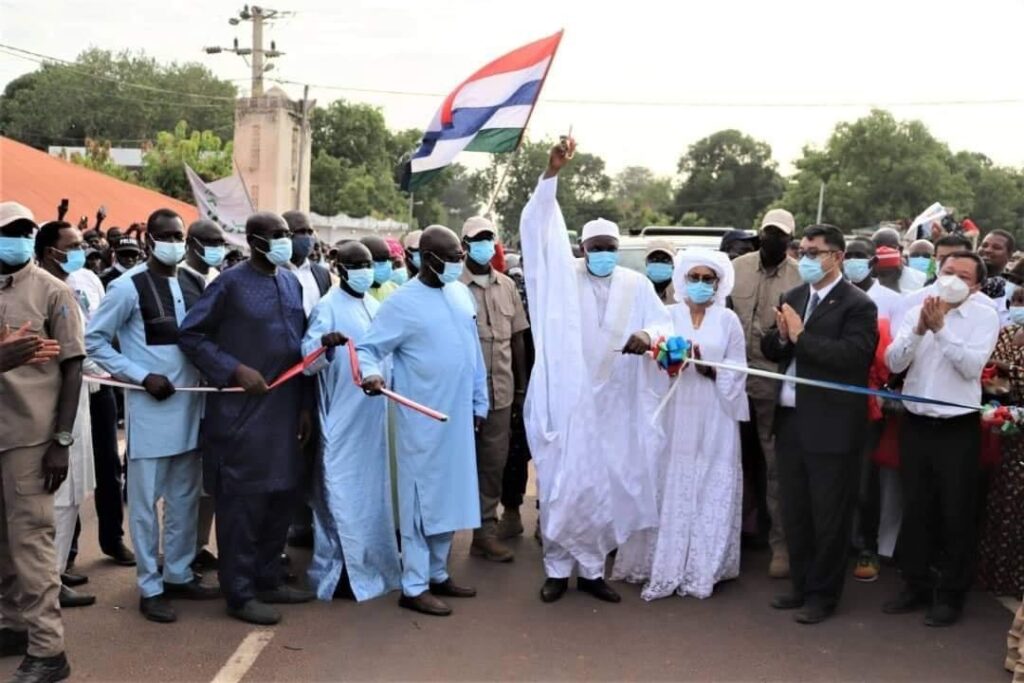
President Adama Barrow cuts the ribbon at the inaugural ceremony of the URR roads and bridges. (Photo/State House media team of The Gambia)
The ring roads and bridges, which cost at least $80 million, connect URR north and south, finally bringing the country’s eastern end into the national highway network.
Dr. Fatou Njie, the director of Asia affairs at The Gambia’s foreign ministry, said the BRI has linked China to far flung markets through “shipping lanes whilst simultaneously using a belt of overload corridors to connect China with Europe, Africa and the Middle East through the use of overland railways, highways and fiber optic cables.”
“This project will tremendously promote free movement of people, cargo and service, and provide great impetus for post-pandemic economic recovery and social development of The Gambia and West Africa sub-region. We firmly believe that this project will lay a solid foundation for the future development of The Gambia and the China-Gambia relationship,“ Ma Jianchun had said.
Talibeh Hydara is assistant editor of The Standard Newspaper in The Gambia.
Photos
Copyright © 2023 People's Daily Online. All Rights Reserved.






